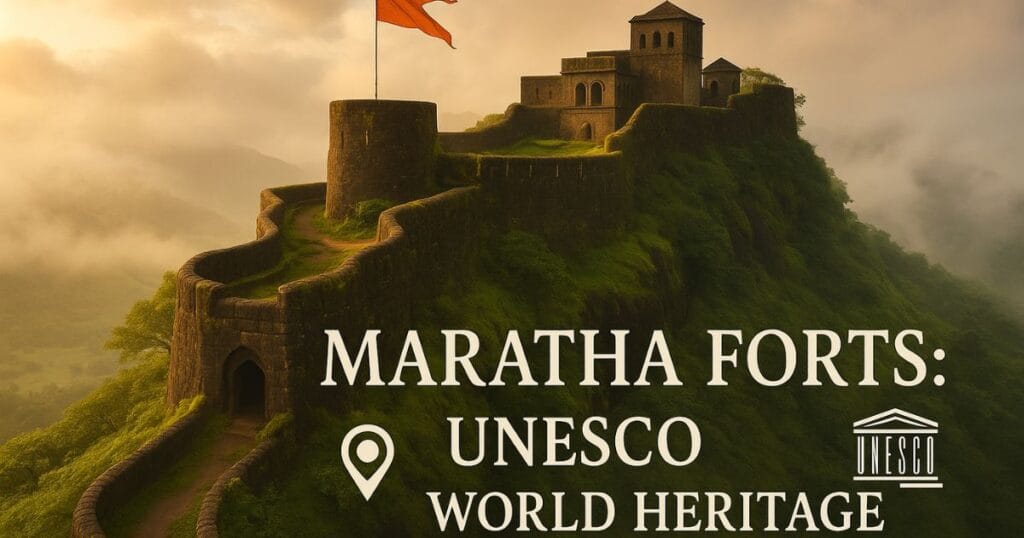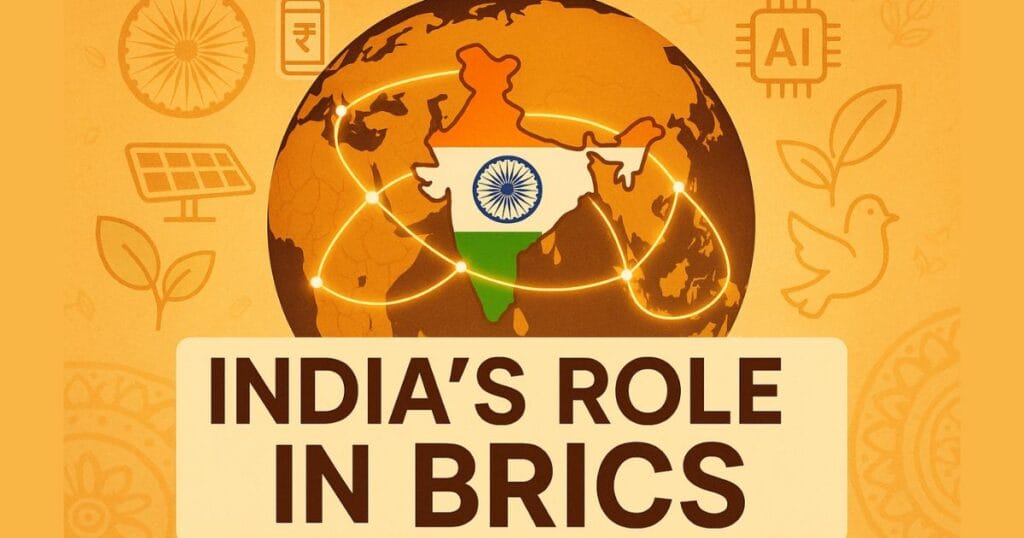Whenever we speak about India’s valor and pride, the name of the Maratha Empire stands as a symbol of courage, strategy, and dignity. Spread across Maharashtra and Tamil Nadu, these magnificent Maratha forts played a crucial role not only in military defense but also in cultural preservation and administration.

In 2025, when UNESCO inscribed 12 Maratha forts under the “Maratha Military Landscapes” as World Heritage Sites, it became a moment of immense pride for India and the Maratha legacy.
Which Maratha Forts Are Now World Heritage Sites?
These 12 forts include
- Shivneri Fort: Birthplace of Chhatrapati Shivaji Maharaj.
- Raigad Fort: Coronation site of Shivaji Maharaj and the capital of the Maratha Empire.
- Pratapgad Fort: Known for Shivaji’s historic victory over Afzal Khan.
- Sindhudurg, Vijayadurg, Suvarnadurg: Coastal forts showcasing Maratha naval strength.
- Lohgad Fort: Famous for its “Vinchu Kata” (Scorpion Tail) structure.
- Khanderi, Salher, Panhala, Rajgad: Strategically important for administration and defense.
- Gingee Fort (Tamil Nadu): Known as “Troy of the East,” which withstood Aurangzeb’s eight-year siege.
Why Did UNESCO Recognize These Forts?
UNESCO selects sites of exceptional global value. These forts:
- Showcase Maratha military strategy and architecture.
- Represent diverse geographical challenges with hill, coastal, and island forts.
- Reflect the cultural identity and pride of local communities.
- Hold global significance, illustrating how India balanced its cultural heritage with defense needs.
Benefits of This Recognition for India
Boost to Tourism: World Heritage status attracts domestic and international tourists, benefiting local businesses, guides, homestays, and transportation services.
Support for Preservation: UNESCO and allied organizations provide funding and technical support for the conservation and maintenance of these forts.
Cultural Pride: With 44 World Heritage Sites, India showcases its rich diversity and strengthens its global cultural standing.
What Makes Maratha Forts Architecturally Unique?
- Strategic Locations: Built on hills, coasts, and islands to provide natural defense.
- Innovative Construction: High walls, secret tunnels, and water reservoirs for long sieges.
- Geographical Diversity: Hill forts (Shivneri, Rajgad), coastal forts (Vijaydurg, Suvarnadurg), island forts (Sindhudurg).
- Naval Power: Coastal forts established Maratha naval dominance in the Arabian Sea.
Travel Guide for Visiting Maratha Forts
Best Time to Visit:
October to March offers pleasant weather and clear skies, ideal for trekking and exploration.
How to Reach:
- Raigad Fort: 160 km from Mumbai, accessible via ropeway or by climbing 1,700 steps.
- Sindhudurg Fort: Accessible by ferry from Malvan.
- Shivneri Fort: Well-connected by road from Pune and Mumbai.
- Gingee Fort: 150 km from Chennai, reachable by bus or taxi.
- Lohgad Fort: Near Lonavala, ideal for trekking enthusiasts.
What to See:
- Raigad: Maha Darwaza, Jagdishwar Temple, coronation site of Shivaji.
- Shivneri: Museum dedicated to Shivaji Maharaj, hilltop views.
- Lohgad: The ‘Vinchu Kata’ structure and panoramic views.
- Sindhudurg: Coastal fort architecture surrounded by the Arabian Sea.
- Pratapgad: Historical battlefield and dense forest surroundings.
UNESCO Official Page on India’s World Heritage Sites
Maharashtra Tourism Official Website
Experience Local Cuisine and Culture
Alongside exploring these forts, indulge in local Maharashtrian cuisine like Misal Pav, Vada Pav, Puran Poli, Bhakri, and spicy Kolhapuri curries.
If visiting during festivals like Ganesh Chaturthi or Gudi Padwa, you can experience the vibrant local culture, including Lavani and Tamasha folk dances, adding cultural richness to your journey.
ALSO READ- UPI’s Rising Wave in India: How Maharashtra and Karnataka Led April-June 2025
Conclusion: Why This Recognition Matters
UNESCO’s inscription of the Maratha forts as World Heritage Sites is not just about preservation but about honoring India’s legacy of bravery, strategy, and cultural richness.
It is a reminder for us and future generations of how our ancestors safeguarded their identity and culture against all odds. Visiting these forts is not just travel; it is a journey into India’s soul, connecting us with the stories of valor and vision that shaped our nation.
Which Maratha forts are included in the UNESCO World Heritage list?
Salher, Shivneri, Lohgad, Khanderi, Raigad, Rajgad, Pratapgad, Suvarnadurg, Panhala, Vijaydurg, Sindhudurg (all in Maharashtra), and Gingee Fort (Tamil Nadu).
When is the best time to visit these forts?
October to March, when the weather is pleasant for travel and trekking.
How will this impact tourism?
It will increase domestic and international tourism, boosting local economies and employment opportunities.
Why Share This Article?
- It celebrates Maratha pride and India’s cultural identity.
- It is a practical guide for travelers and history lovers.
- It helps in promoting sustainable tourism.
- It connects readers with India’s rich heritage.
If you found this article informative, share it with others and inspire them to explore the legacy of the Maratha forts.


